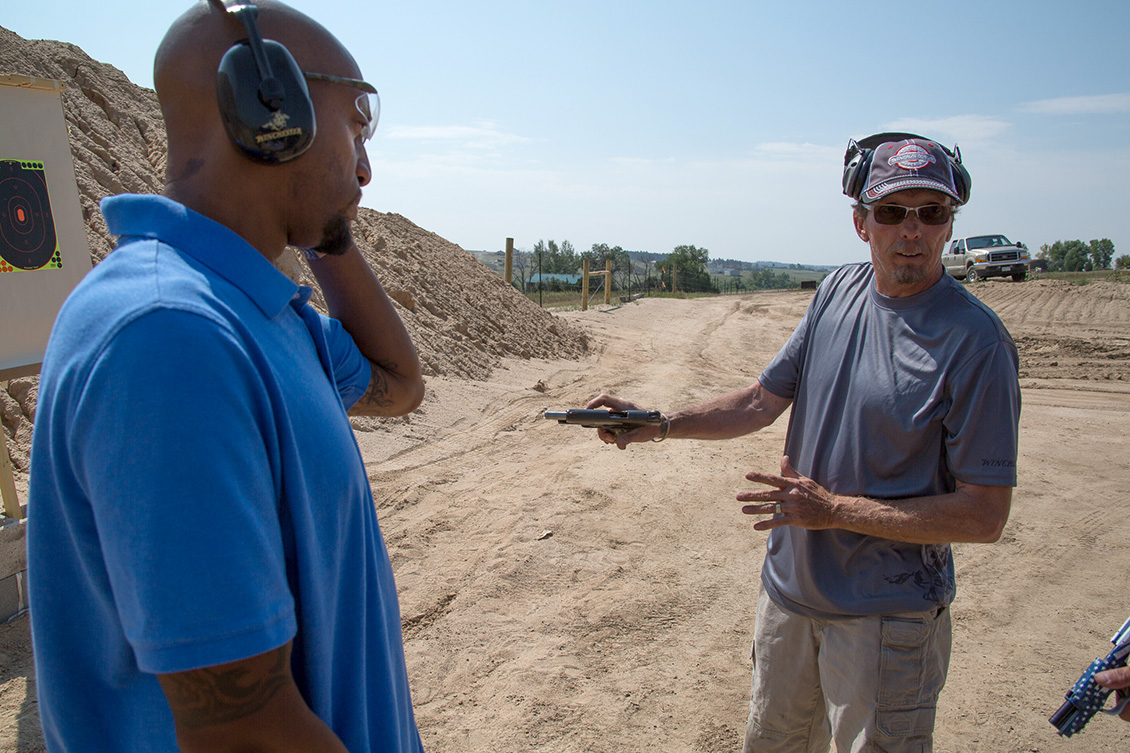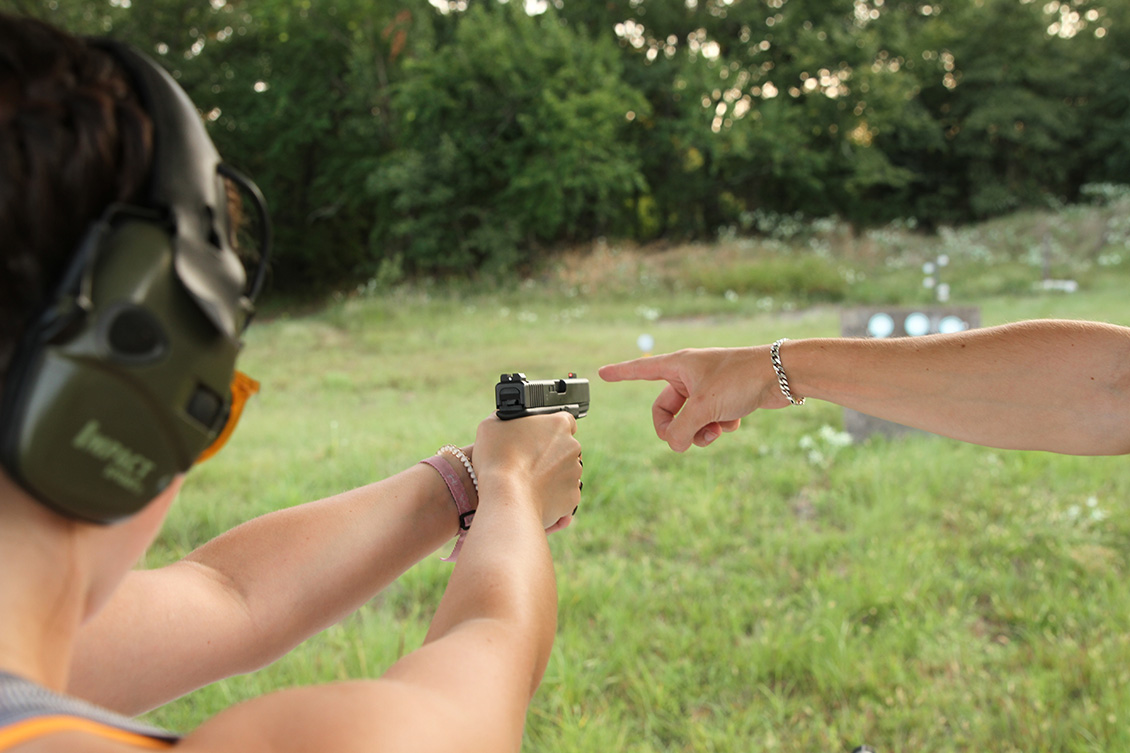Sight Alignment and Sight Picture
Shooting a handgun accurately requires more than just pointing and shooting.
When shooting a handgun, it’s very tempting to point the gun where you are looking and expect to hit your intended target. Unfortunately, it doesn’t happen like that.

In reality, you must align your sights with one another, which is known as sight alignment. Then arrange the sights together on the target, which is known as sight picture. These two elements of shooting--sight alignment and sight picture--are key to accuracy.
Sight Alignment:
Most handguns are equipped with iron sights. The front sight is commonly a square post, while the rear sight is most commonly a dovetail with a notch. The purpose of the front and rear sights are so the shooter can align the point of aim with the point of impact. To do this, hold the handgun at arm's length, and focus on the front sight. Move the gun’s barrel up or down until the square front post fits into the rear notch, with the top of the post and the top of the notch even across the top. Now move the barrel slightly left or right until you can see the same amount of daylight between the both sides of the front sight and each side of the rear notch. This is called sight alignment.
Sight Picture:
Have you ever heard someone say “Aim small, miss small?” This means that you hold your sight alignment on a very small part of the target such as the bullseye. This narrows your focus, and if you miss, you often won't miss by much.
Quite simply, “sight picture” is what the shooter sees when the sights are aligned and placed on the target.
The human eye can only focus on objects in one depth of field at any given time. This poses a challenge for achieving sight picture, since the rear sight, front sight and target are all positioned at different focal points. This requires the shooter to choose one of those three objects to focus on. Years of evidence suggest that the front sight is the best focal point, because it splits the difference between the three options. When focusing on the front sight, however, realize that the rear sight and the target will be slightly blurry.
If you choose to use an optical sight such as a red-dot sight, achieving proper sight alignment and sight picture become much more simple. The red dot sight must simply be superimposed on the bullseye to form the sight picture. Since the red dot sight is calibrated for parallax, it will appear to be in focus while on the target, so the shooter can focus on the target.
No matter what sights you’re using, once perfect sight alignment and sight picture are obtained, all you have to do is pull the trigger without moving the gun, and you’ll hit the target. Easy, right? Well, if it were easy, all of us would be Annie Oaklies!






